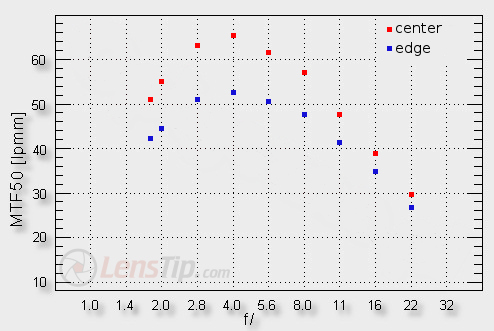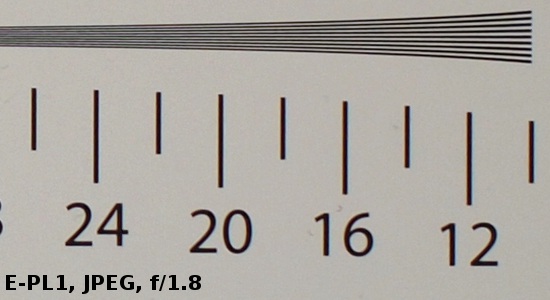Olympus M.Zuiko Digital 17 mm f/1.8
4. Image resolution
Let’s glance at a graph below and see how the tested lens fares in the frame centre and on its edge.

Please Support UsIf you enjoy our reviews and articles, and you want us to continue our work please, support our website by donating through PayPal. The funds are going to be used for paying our editorial team, renting servers, and equipping our testing studio; only that way we will be able to continue providing you interesting content for free. |
- - - - - - - - - - - - - - - - - - - - - - - - - - - - - - - - - - - - - - - - - - - - - - - -
With a result of over 50 lpmm everything seems to be ok at the maximum relative aperture – you are safely above the decency level so you get fully useful images. On stopping down the image quality improves and the maximum MTF values are in the area near f/4.0. More or less, the situation is as it should be – unfortunately only up to a point. If you compare these results with those of the competitors, the problems start. The level of almost 66 lpmm, reached by f/4.0, allows you to enjoy sharp photos but it is just a decent value, nothing more. It’s enough to say here that the Panasonic 1.7/20 was able to reach almost 75 lpmm and it could reach values exceeding 70 lpmm already by f/2.8. The Olympus compares unfavourably here.
Similar things can be said about its performance on the edge of the frame. Here the differences between the Olympus and the Panasonic are smaller but still the latter is better. As the Olympus is the bigger of those two, it really positions it in an unfavourable light – its edge of the frame should be a place where it shows its dominance over such a typical “pancake” lens as the Panasonic. Unfortunately it is not the case…
The crop below was taken from a JPEG file saved along a RAW file, used for the analysis above.
 |






